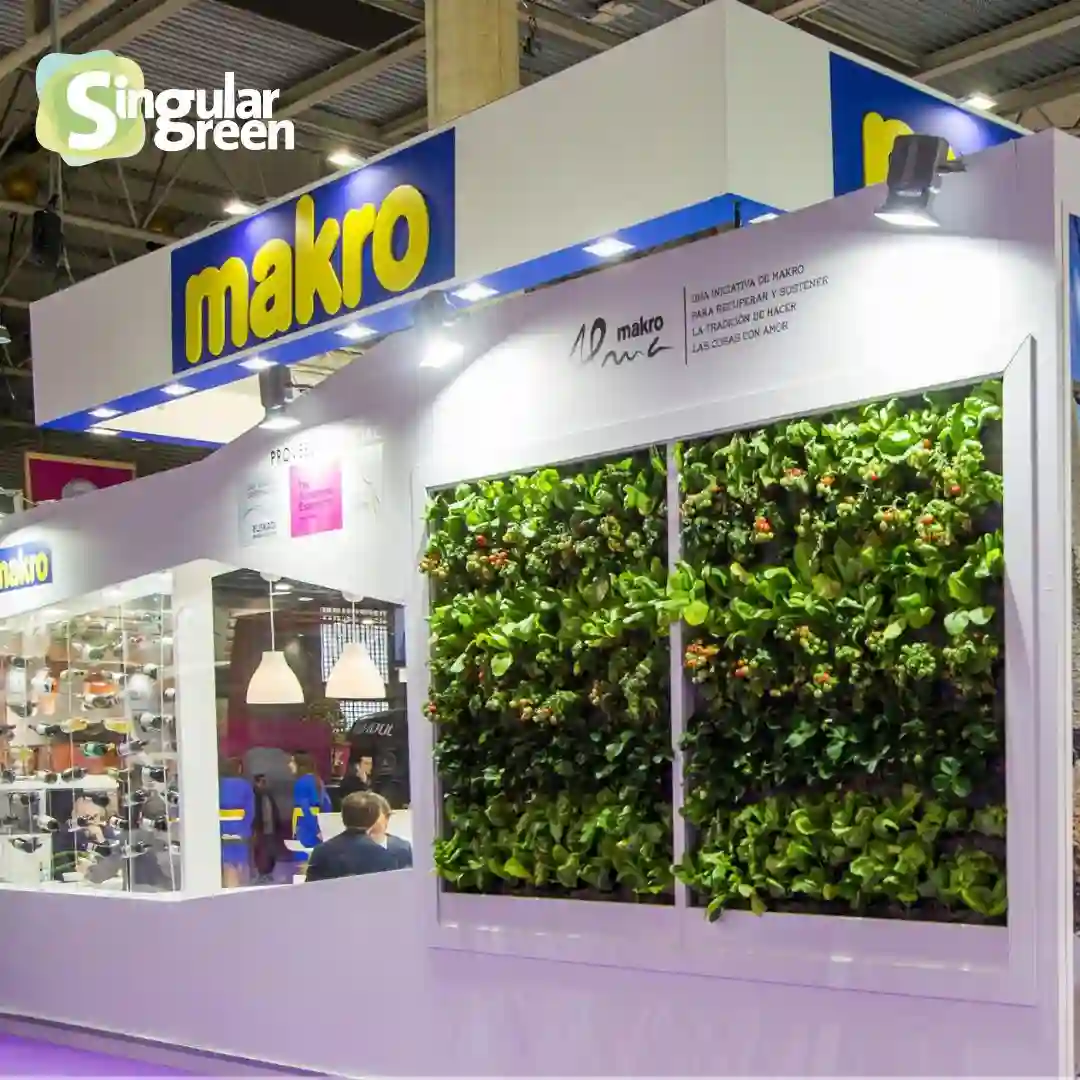Innovation in landscaping is fundamental to design and maintain green spaces that are not only aesthetically pleasing, but also sustainable and adapted to people’s needs.
The integration of advanced technology in these spaces plays a fundamental role, as we want to demonstrate in our recent intervention on the façade of our office, a green façade included in the framework of the Plan Verdea.

The Importance of Innovation in Landscaping: Integrating Technology into Green Spaces
The latest technology in landscaping has changed the way outdoor spaces are designed and maintained.
With the use of advanced technological tools and systems, it is possible to create unique, customised environments that are tailored to the needs of each project.
Technological advances in landscaping allow for the creation of smart gardens, automated irrigation systems and efficient lighting solutions.
These technologies not only improve the aesthetics of green spaces, but also contribute to their sustainability and conservation.
Incorporating technology in outdoor spaces offers several advantages:
- water savings through efficient irrigation systems,
- optimising energy resources with LED lighting and creating safer and more comfortable environments.
- the creation of safer and more comfortable environments for users.
In addition, the implementation of new technologies, such as measurement sensors, makes it possible to collect data on electricity consumption, air quality and noise levels, among others.
In short, they seek to demonstrate their effectiveness in reducing the consequences of climate change and mitigating the heat island effect.
Promoting Biodiversity and Sustainable Architecture in Urban Green Spaces
Innovation in landscaping not only creates healthy spaces for citizens but also focuses on the promotion of biodiversity.
Biodiversity in urban green spaces contributes to the formation of balanced ecosystems, favouring the presence of native flora and fauna and promoting the conservation of plant and animal species.
Sustainable architecture in these spaces is based on the use of ecological materials, the optimisation of natural resources and design that minimises environmental impact.
These strategies enable the creation of green environments that improve the health and well-being of the community.
An example of innovative landscaping: vertical garden on our façade
The project for our new green façade has been financed within the framework of the Valencia Region’s Plan Verdea.
This plan aims to reduce the consequences of climate change and mitigate the heat island effect through BNS actions aimed at renaturalisation and resilience in the urban environment to improve the habitability and quality of life of current and future generations in the Valencian Community.

Our proposal for a green façade has been oriented towards innovation in landscaping, integrating new technologies and presenting a monitoring plan to measure the benefits of the vertical garden, which we would like to share below:
Benefits of the Vertical Garden
The vertical garden installed on our façade offers multiple benefits, which we have studied and verified:
Direct Savings
It can reduce the interior temperature of the building up to 5ºC in summer, saving up to 500€/m2/year. We measure the reduction in electricity consumption before and after installation.
Direct Health Benefits
- Oxygen Generation: between 60 and 120 l/m² is expected to be generated.
- Air Dust Capture: The vegetation in the garden captures dust, improving air quality.
- Harmful Gas Filtering: We install sensors to measure NOx, PM2.5, PM10 and VOC reduction.
- Noise Reduction: Vegetation can reduce noise pollution by up to 10 decibels, measured by noise sensors.
- CO2 Fixation: Plants in the garden can capture around 2.5 tonnes of CO2 per year.
Functional Benefits
- Aesthetic Enhancement: The vertical garden significantly improves the appearance of the façade and the identity of the neighbourhood.
- Reduction of the Heat Island Effect: The vegetation contributes to lowering the temperature of the façade, mitigating the heat island effect.
- Use of space: The vertical garden allows the façade to be used to generate a large green space, benefiting both building users and neighbours.
Eco-systemic and biodiversity benefits
- Increased plant diversity: thanks to vertical gardens you can concentrate a wide range of plants which increases the diversity of flora in the area. It can also help to protect and conserve native plants.
- Wildlife attraction: plants attract pollinators which are essential for the reproduction of many plants and provide shelter and food for birds and small mammals.
- Improved ecological connectivity: vertical gardens can act as ecological corridors linking different green areas and allowing the exodus of species through urban environments.
Innovation in landscaping, exemplified by our green façade, demonstrates how the integration of technology and nature can improve sustainability and quality of life in urban environments.
These initiatives are essential to meet the challenges of climate change and create more liveable cities for all.







